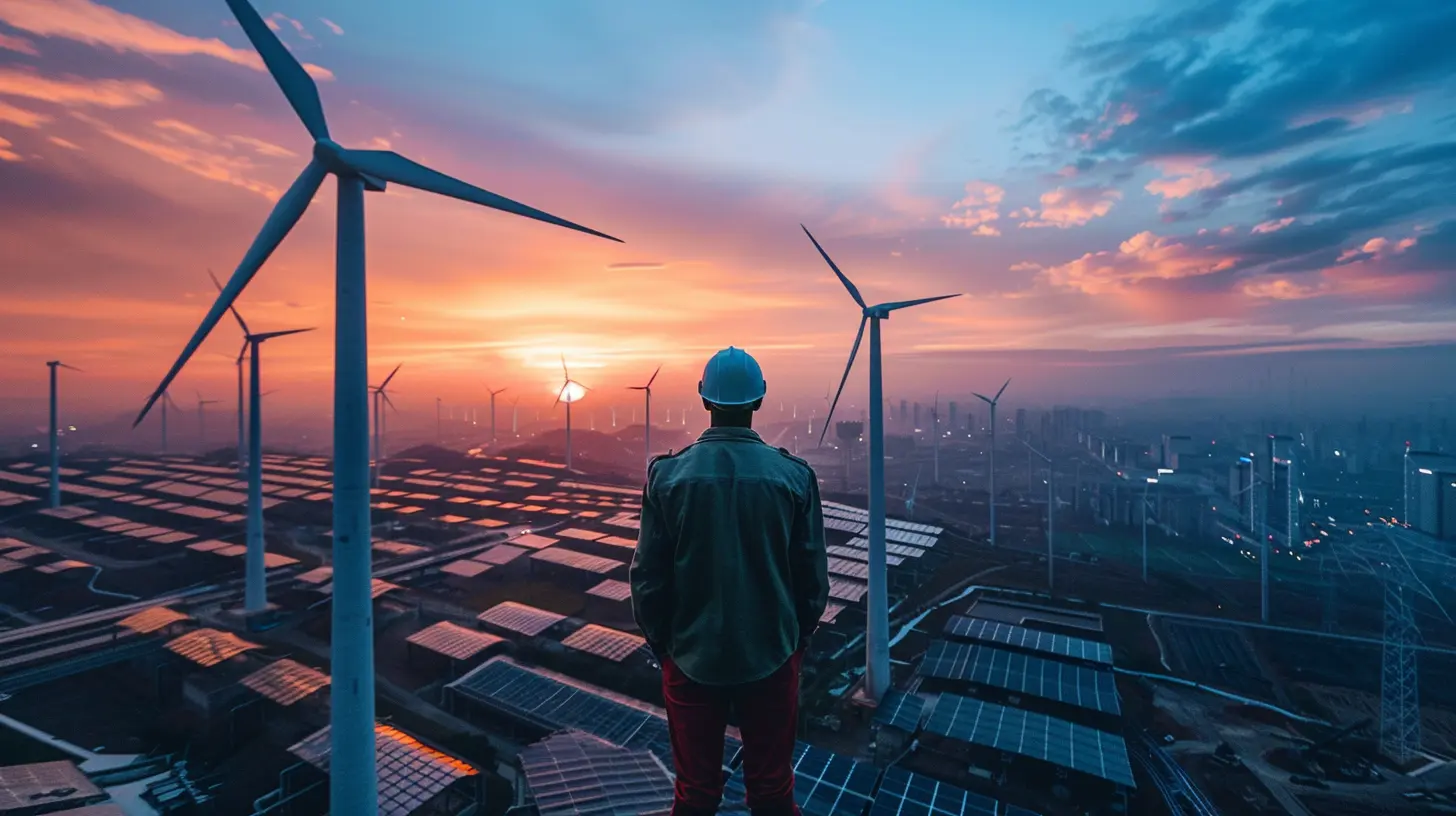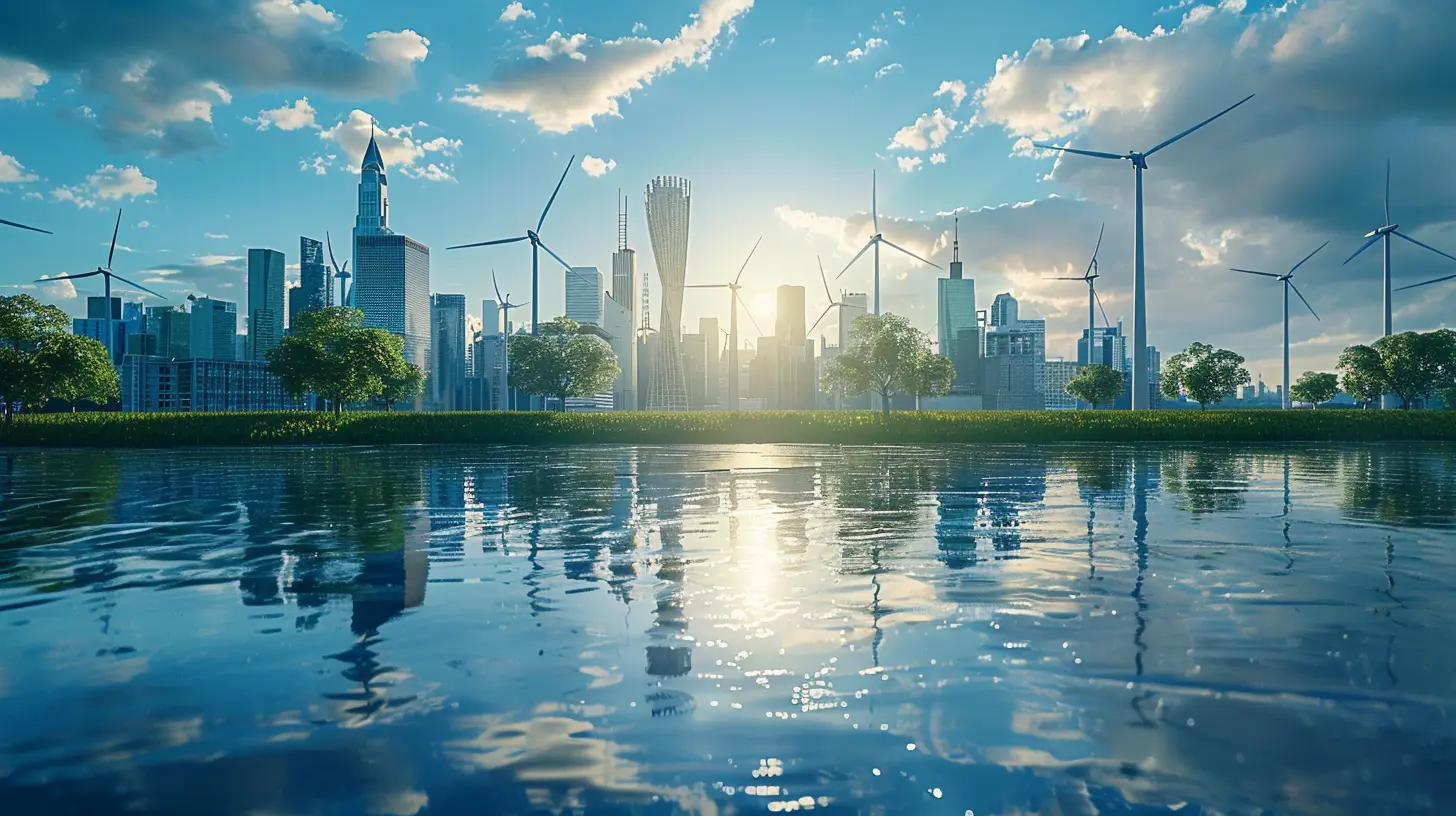Energy-Efficient Building Materials: Paving the Way for Green Construction
28 November 2025
Let’s face it—our planet is feeling the heat. Rising temperatures, melting ice caps, erratic weather patterns—all alarming signs pointing to one thing: it’s time we rethink how we build. Now, more than ever, energy-efficient building materials are stepping into the spotlight, not just as a trend, but as a necessity. These superstar materials are shaking up the construction world, paving a greener, more sustainable path for future generations.
But what exactly are energy-efficient materials? Why should you care? And how can they revolutionize how we design and build homes, offices, and entire cities? Let’s dive into this inspiring world of eco-friendly construction, one brick at a time.
What Are Energy-Efficient Building Materials?
Let’s break it down. Energy-efficient building materials are specially designed to reduce the amount of energy a building uses to maintain comfortable temperatures. That means less reliance on heating and cooling systems, lower utility bills, and most importantly—reduced carbon footprints.Think of them as the unsung heroes behind the scenes, quietly making homes warmer in the winter, cooler in the summer, and more breathable year-round—all while cutting down your energy bills.
Why Should We Care?
Still wondering why this matters? Here are some eye-opening facts:- Buildings makes up nearly 40% of global energy consumption.
- Traditional construction is one of the biggest contributors to greenhouse gas emissions.
- Energy-efficient materials can cut energy use by as much as 50%.
So, if we’re serious about a sustainable future, our buildings need a serious makeover. And it starts with what they’re made of.
The Benefits Go Beyond Just Energy
Sure, saving energy sounds great—but the perks of using green construction materials actually go well beyond that:1. Lower Utility Bills
Who doesn’t love saving money? With better insulation and smarter building design, energy-efficient materials drastically reduce heating and cooling costs.2. Healthier Indoor Environment
Some eco-friendly materials manage humidity, filter out pollutants, and even resist mold. Better air, better vibes.3. Increased Property Value
Homes and buildings with energy-efficient features have higher resale values. Buyers love the idea of long-term savings and sustainability.4. Reduce Environmental Impact
Using recycled, non-toxic, or renewable materials means fewer emissions, less waste, and a cleaner planet. It’s a win-win.
Top Energy-Efficient Building Materials Changing the Game
Ready to meet the game-changers? Let’s talk about the materials that are putting traditional bricks and mortar to shame.1. Insulated Concrete Forms (ICFs)
Imagine building walls like a sandwich—concrete in the middle, insulation on both sides. That’s what ICFs do. They offer remarkable insulation and are super durable against disasters.Perks:
- Fire-resistant
- Great thermal insulation
- Noise reduction
- Reduces air leaks
2. Structural Insulated Panels (SIPs)
Think of SIPs as the LEGO blocks of green buildings. These panels combine insulation and sheathing in one ready-to-install section. They’re quick to assemble and seal tightly to keep the weather outside.Perks:
- Quick construction
- Superior insulation
- Reduces material waste
3. Cool Roofing Materials
No one enjoys a roof that turns your house into an oven, right? That’s where cool roofs come in. These materials reflect more sunlight and absorb less heat.Perks:
- Reduces cooling costs
- Extends roof lifespan
- Lowers urban heat
4. Recycled Steel
Why chop down trees when we’ve got steel that can be reused endlessly? Recycled steel is strong, lasts forever, and doesn’t warp or rot.Perks:
- High strength
- Minimal maintenance
- Made from 100% recyclable materials
5. Low-E Windows
Low-emissivity (Low-E) windows have a special coating that reflects heat while still letting in natural light. It’s like having sunglasses for your house!Perks:
- Energy savings
- Cuts UV damage to furniture
- Keeps interiors comfortable year-round
Innovative Natural Solutions
Mother Nature’s got some pretty smart ideas too. Let’s look at some natural materials that are as green as it gets.1. Bamboo
Faster than your average tree—literally. Bamboo can grow up to 3 feet a day, making it an ultra-sustainable alternative to wood.Perks:
- Lightweight yet strong
- Grows rapidly
- Biodegradable
2. Hempcrete
Yes, it’s made from hemp. Mixed with lime and water, hempcrete is a breathable, fire-resistant, and mold-resistant material that’s making waves in eco-construction.Perks:
- Excellent insulation
- Absorbs carbon dioxide
- Pest-resistant
3. Cork
Ever stepped on a cork floor? Warm, soft, and naturally insulating, cork is harvested from trees without cutting them down.Perks:
- Renewable and biodegradable
- Soundproofing properties
- Naturally antimicrobial
Smart Tech Meets Eco Materials
We live in a digital age—so it makes sense that our materials are getting smarter too. Combining energy-efficient materials with smart home technology leads to buildings that adapt to their environment and optimize energy use.Examples include:
- Smart Glass that changes tint based on sunlight.- Energy-monitoring insulation that adjusts based on interior temperature.
- Solar-shingle roofing that generates electricity while protecting your home.
This is next-level sustainability, folks—like having your home think for itself.
How to Incorporate Energy-Efficient Materials in Your Next Project
You don’t need to be building a skyscraper to go green. Whether you’re renovating your kitchen or building your dream home, here’s how to start:1. Start with an Energy Audit
Find out where your current home is wasting energy. It helps you prioritize the biggest impact areas.2. Upgrade Insulation
This is a game-changer. Proper insulation in walls, roofs, and floors can cut energy use drastically.3. Choose Eco-Friendly Windows and Doors
Swap out those leaky, single-pane windows for Low-E or double-glazed options.4. Go Solar—Even Partially
Solar panels or solar shingles aren’t just for the wealthy anymore. Incentives and tax credits make them more accessible than ever.5. Use Green Materials for Flooring, Walls, and Roofing
Opt for bamboo, cork, or reclaimed wood for floors. Try recycled metal roofing or eco-friendly paints with low-VOCs.Challenges We Need to Overcome
Of course, it’s not all sunshine and rainbows. There are a few hurdles on the path to fully green construction.1. Upfront Costs
Sometimes, these materials come with a higher price tag. But remember, the savings on energy bills and maintenance add up over time.2. Limited Awareness and Availability
In some areas, energy-efficient materials can be hard to find. Education and local support are key to making these options more mainstream.3. Resistance to Change
Long-standing habits die hard. Construction firms and homeowners alike can be hesitant to try “new” materials.But here’s the silver lining: change is happening. And the more we support and demand sustainable options, the faster the industry evolves.
The Future of Green Construction
Imagine a world where buildings actually give more than they take. Where every apartment, every school, every office is part of the solution—not the problem.That’s the potential we’re looking at.
Green construction is more than a trend—it's a movement. And energy-efficient building materials are leading the charge. From smart windows to hemp walls, we’re entering a golden age of sustainable design. It just takes a little courage to leave the old ways behind.
Final Thoughts
So, what role will you play in this green revolution?Whether you're a homeowner, builder, architect, or just someone who cares about our planet, the choices you make matter. By opting for energy-efficient building materials, you're not just building structures—you're building a better future.
The road might be long, but every eco-conscious decision is a brick in the path toward a sustainable world.
Let’s build something better. Together.
all images in this post were generated using AI tools
Category:
Renewable EnergyAuthor:

Michael Robinson
Discussion
rate this article
1 comments
Stacey Lane
Great insights! Embracing energy-efficient materials is a crucial step toward sustainable living. Let’s build a greener future together!
November 28, 2025 at 3:38 AM

